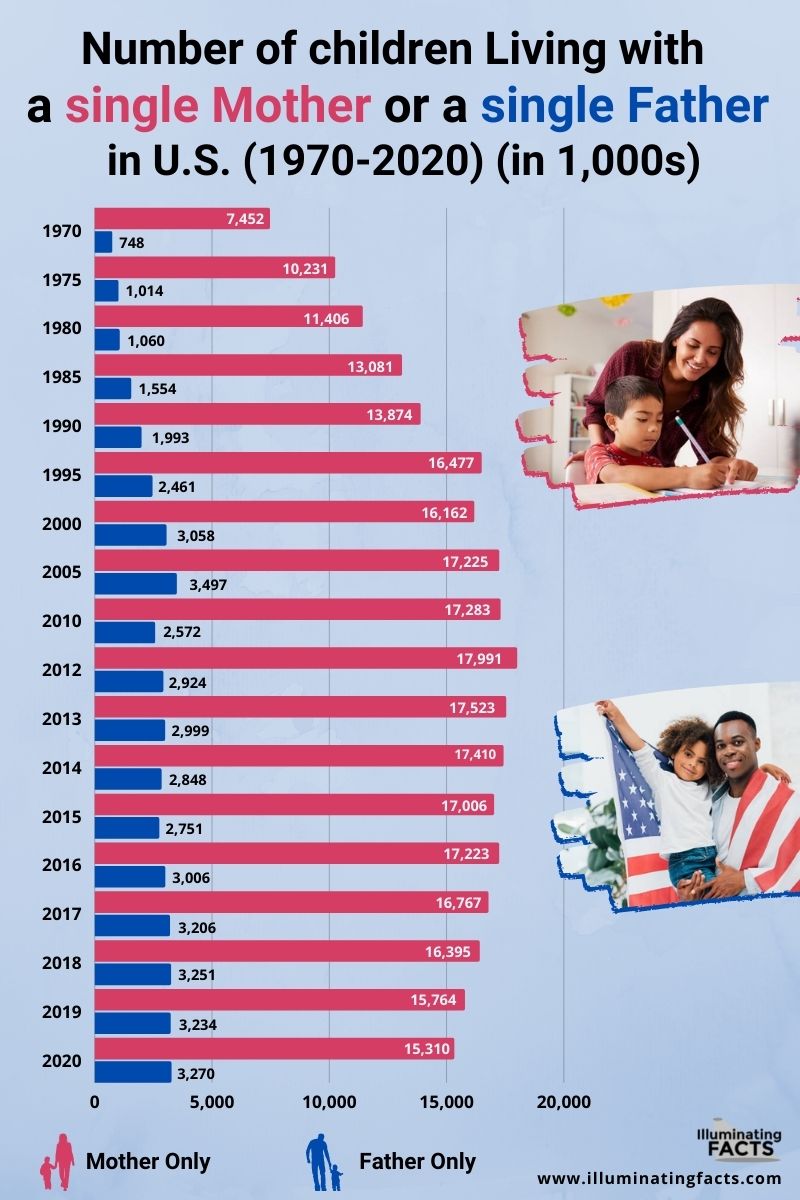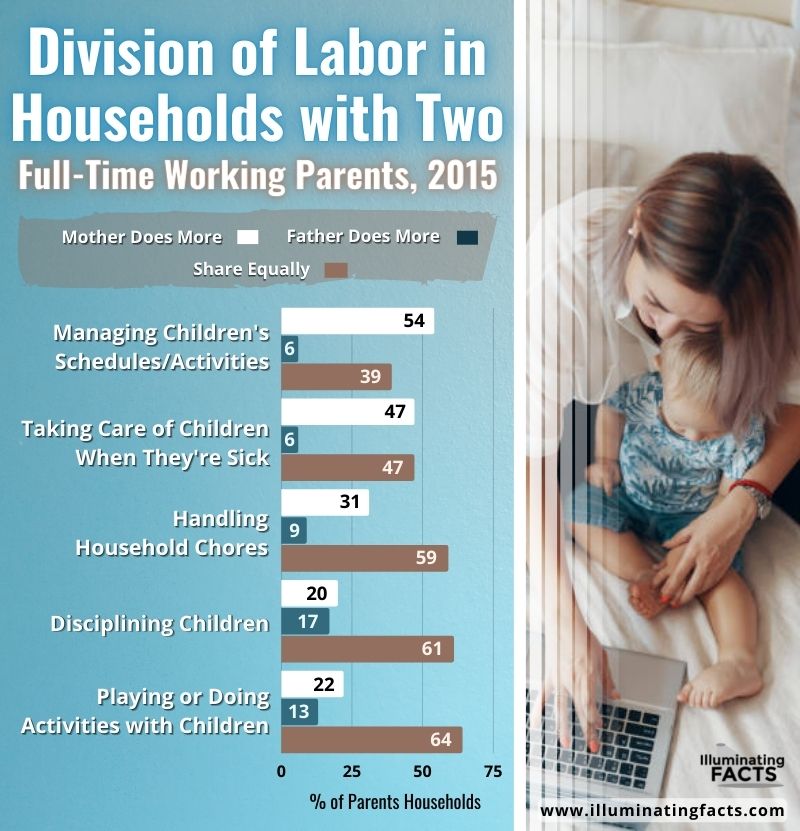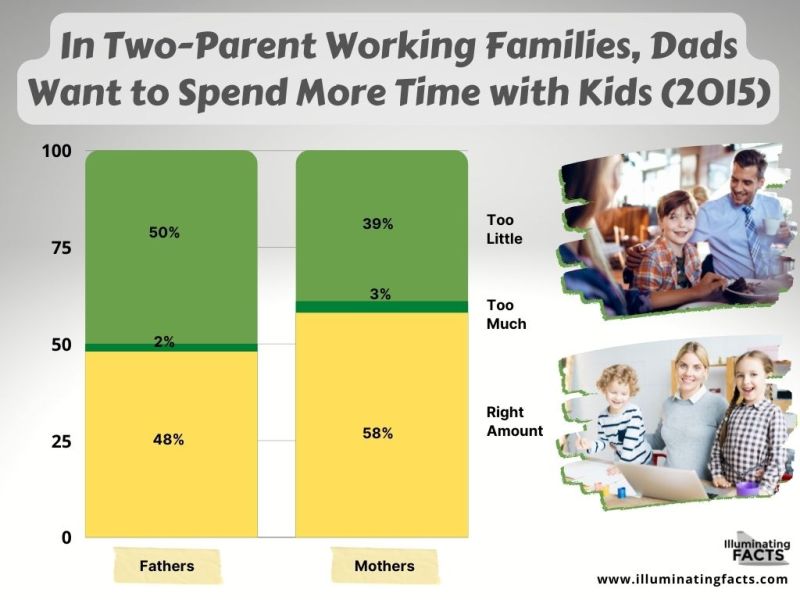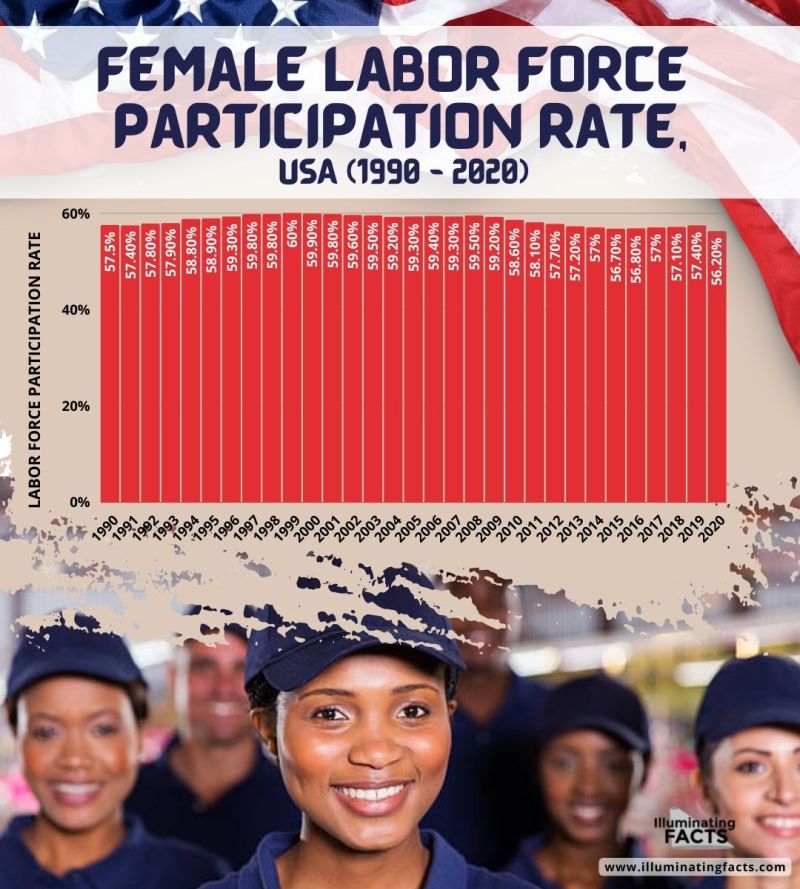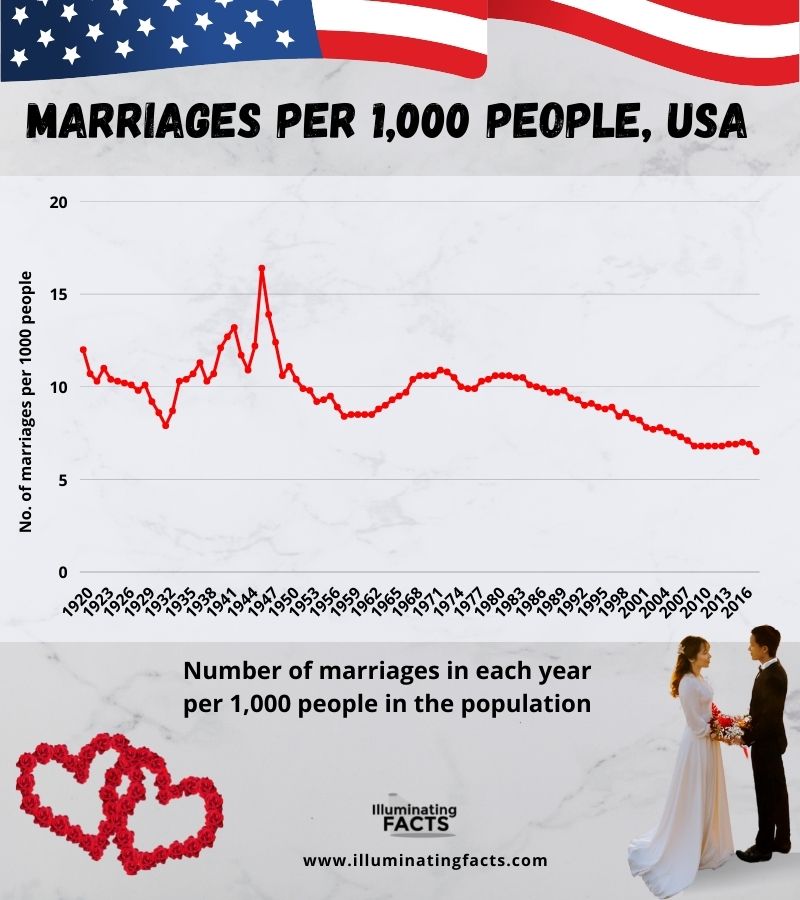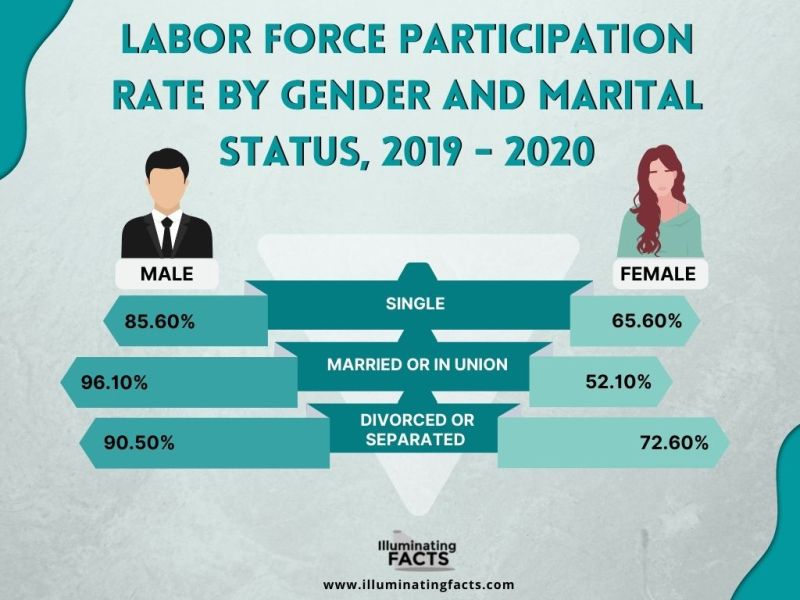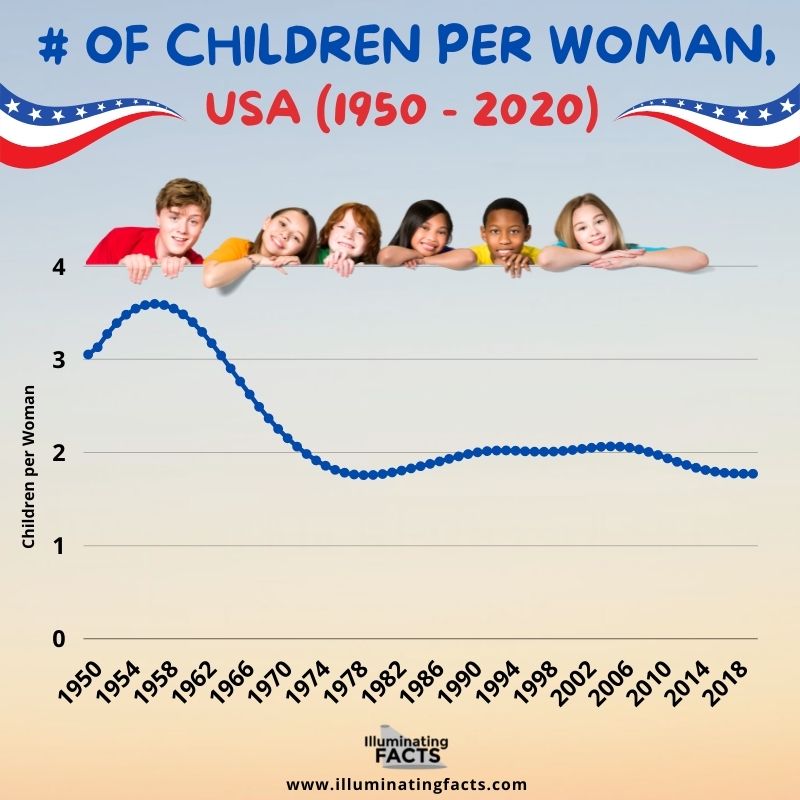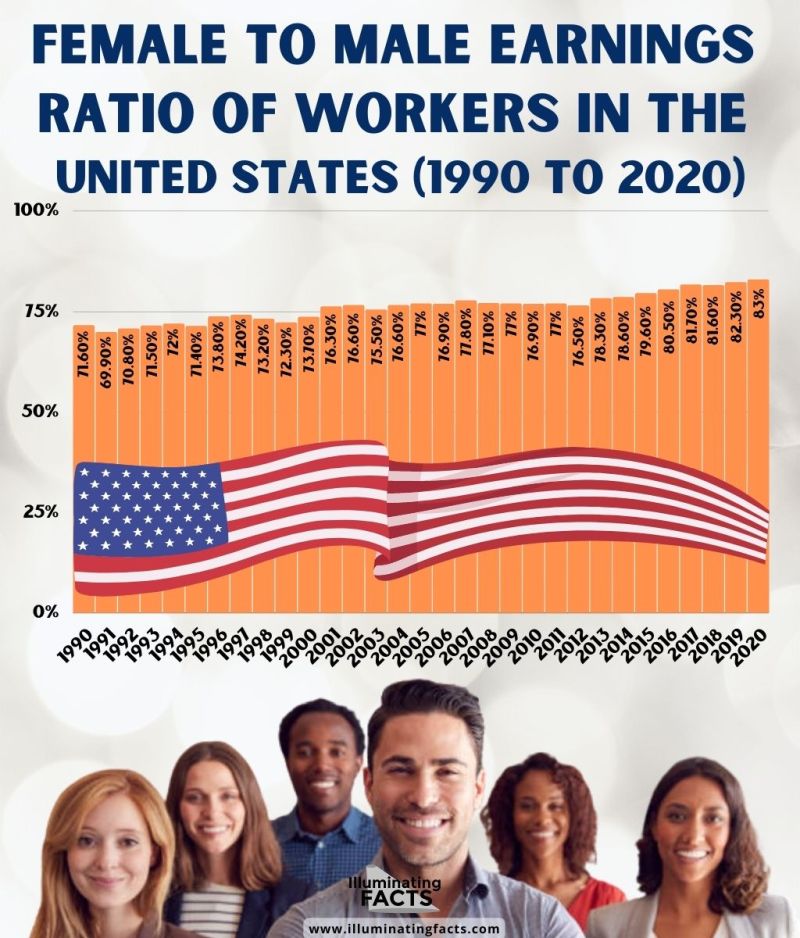In today’s age, taking a look around, it is hard to find mothers who do not work. Commonly found working mothers have not always been the case in the USA. We have reached this point after much struggle, tolerance, and legislation. This article will discuss the history, economic changes, and social evolution that has led us to the point where we can safely say that the two-parent working family system has grown.
Moreover, the mention of the term “work” in this article only encapsulates capitalist labor. It is acknowledged that other forms of labor do classify as work. For example, raising children, managing a household, running a kitchen, and caring for children are domestic labor forms that often go unrecognized. Mothers that care for their children, regardless of whether they are a part of the labor force or not, are working mothers.

Angry child and a mother

A mother working from home looking exhausted

Mindful african mom with funny kid daughter doing yoga

A kid looking at the sunset
History of types of families in the USA
Much like the rest of the world, the USA has had a history of different family structures that make up the country. Most familial systems have evolved and taken up new forms. Similarly, with recent legislation, more liberty, and increased freedom, new systems have come about.
Traditional family systems were two heterosexual people bringing up their kids, but this narrative is not prevalent nowadays, and other family structures have come into the picture. In the USA, parenthood circumstances have changed due to the high rise in divorce, remarriage and cohabitation.
Nuclear Family
The nuclear family was the most standard family system at the time of the USA’s founding. A nuclear family typically consists of heterosexual partners and their children. Significant decisions of the house are made by the husband, as head of the household and patriarch. The husband is supposed to be the sole breadwinner of the family and deal with finances, mortgage, and technology.
The wife, on the other hand, is the primary caretaker of the household and the children. She is expected to cook, clean, run the kitchen, and raise children. She has no connection to external matters or finances. The wife in a nuclear family does not work outside the home, as most of her labor is domestic.
The nuclear family system has been the norm and was often seen as a standard for most young adults. Families that include step siblings or half siblings are often categorized under the label of a nuclear family. This classification is done based on the dependency of the household on the male head of the home.
Families with adopted children are also classified under the nuclear family label. Contrary to the belief held, a nuclear family does not need to include the biological children of the two partners.
Partnerships
As the name suggests, these occur between two partners. The partners can be heterosexual or homosexual. Couples have children while in partnerships and do qualify as a two-parent family. However, this is a grey area. The data on this is limited, and partnerships often lack certainty. The lack of confidence hints towards ending partnerships and the two-parent family turning into a single-parent family.
Moreover, most partnerships end up into marriages, eventually. These are then covered under the nuclear family or the two-parent working family.
Single Parenthood
A single parent is someone who cares for his children without any assistance from the second parent. Traditionally, this resulted from the death of one of the two parents, for example, during childbirth or abandonment. This single-parent family can be in two forms; sole parent or co-parent. In the case of solo parenting, the parent takes no assistance from the spouse in terms of emotional or financial help and keeps the spouse entirely out of the children’s lives.
In co-parenting, the single parent primarily responsible for the child’s upbringing take some assistance from their spouse to give him a quality lifestyle. Single-parent families are increasing as more and more couples resort to divorce or unintended pregnancies, and more children are born out of wedlock nowadays.
Although such incomplete households are highly detrimental to the child’s mental health and well-being, they are becoming more accepted in society. From 1960 to 2016, the proportion of U.S. kids below 18 living with one parental figure went from 9% (8% with mothers, 1% with fathers) to 27% (23% with mothers, 4% with fathers).
In 2020, approximately 15.31 million children were living with single mothers in the United States. On the other hand, approximately 3.27 million children were living with a single father. Since 2012, there has been a peak of children living with single mothers. Also, since 2005, there has been a decline in the number of children living with their single fathers.
Figure 1: Data by Statista [1]
Two-Parent Household
No matter the dimensions in their household, every child must have the economic, social, and emotional guide needed for a healthy life. Living in an environment with two married or partnered adults or caregivers ensures that kids develop the focus and assets they need to be healthy life.
The nuclear family with two married parents was long held in esteem as the ideal environment to raise the kids. Growing up with married or partnered adults offers an extra social and emotional guide for children, in addition to for the adults themselves.
The need for two working parents
The United States of America is widely known as the most capitalist country globally, and they are proud of it. Capitalism has proven advantageous and has helped the country prosper and become what it is today: the most incredible, freest country. Capitalism relies on businesses. New businesses need to pop open all the time, invest in marketing, attract the most consumers, and take all their money. Capitalism has its roots in its consumers, ordinary citizens.
The seeming urgency and need to obtain a particular product created through marketing forces people to buy products, and for products, people need money. A household that a single breadwinner runs, as was usually the case in nuclear families, barely has enough to make ends meet, and there is not enough for luxuries.
This way was for women to contribute to the household’s finances to afford all the new technologies, machines, and more. Followed by this era came the first wave of feminism. This wave was on a quest for equal opportunities for both men and women. If equal opportunities were not created, the movement aimed at making those themselves through the law.
The idea of women having it all was constantly pushed until an increasing number of women began entering the workforce and took up jobs that men dominated. Simultaneous to both of these eras, huge developments were being made in the education and technology department. Increased high school enrollments began among women, and vocational training institutes opened.
All of this was pushed by the women’s movement and the need for workers to help capitalism prosper. With adequate vocational and technical training, women began to sign up for call centers and other clerical work. These schools and centers also required teachers; women chimed in here, so started the incredible and ongoing occurrence of women taking up teaching positions. All of this was seen as a historic moment and a massive win for feminists.
Statistics from past years and recent data has revealed that more mothers were eager to join the workforce than single women with no children. It was them who further opened up opportunities and showed the world that they could have it all. They can manage a house and perform optimally at their jobs.
Effects of Both Parents Working on Children
Psychological
There is no one solution to whether it is ideal if both mother and father work. Nowadays, it’s not unusual for both parents to be working. This fashion isn’t always confined to households with challenging monetary situations however is likewise visible amongst financially stable families. Two working parents’ problem is almost inevitable in this era considering today’s financial needs and feature their percentage of pros and cons.
The effects of both parents working on a baby are unavoidable. Therefore, parents must find a method to maintain stability between the pros and cons of both full-time. Nowadays, it is too difficult to meet the standards of the modern-day family lifestyle on one salary. So, to fulfil all the financial needs of the 21st-century household, parents are left with no choice other than to work full-time and leave their kids alone.
It is seen that two-income families enjoy better financial footing and consequently experience less financial stress. In 2011, amongst 34.3 million U.S. families with children, 87.2 percentage had an employed parent, and in 58.5 per cent of those families, both mother and father worked.
Positive Effects
If you look at the positive aspects of both parent’s earnings, then this includes:
Mentally Healthier Children
It is seen that in cases where mothers have more authority and discretion at work, their children are relatively healthier mentally. Since both mother and father have their full-time jobs and cannot afford to be with their youngsters throughout the day, so whilst they return home, they also have lots of life experiences to share with kids. Ultimately, this enables the kid to grow more mature and helps them understand life better.
Kids of such parents get to experience life through a different perspective, learn the value of small things and realize the importance of struggle in life. Children learn from their surroundings. When they see both their parents working full-time and balancing work life and family time, they know to maintain that balance from a young age, making them more respectful towards others and helping them deal with stress in their lives better.
When it comes to two full-time working parents and managing the children’s schedules and activities, mothers play their part more than the father. Fathers, on the other hand, share tasks equally when it comes to chores, and responsibilities of the household.
Figure 3: Data by Pew Research Center [3]
Quality Lifestyle
The primary benefit of two people earning is more money in parents’ hand to spend on their children. It translates to higher quality daycare, better education, better health care and better recreational activities. One apparent instance is that travelling annually for a whole family, an excellent manner of creating a close-knit environment for the family, is best viable if the economic supply of that circle is powerful and steady.
Self-care and Self-love
It is observed that working mothers with ambitions learn to keep a better balance between taking care of their family and themselves. Such mothers don’t neglect self-care and successfully incorporate that in their children as well. In the case of homemakers, it is often seen that the mother gets too engrossed in taking care of everybody else that she ends up neglecting her health. Consequently, their children suffer from behavioral problems.
Significance of time
When both parents work full-time, they’ve only a few hours to spend at home with their kids. It teaches the youngsters that time is integral, and you cannot go back once it’s passed. They apprehend the significance of valuing time and how important it is to make the most out of it. All of this is nurtured within the kid’s thoughts from an entirely early stage. Such parents successfully infuse all the rights.
Figure 4: Data by Pew Research Center [4]
Makes Kids More Mature
Working parents do play a positive role. Kids of working parents end up becoming independent from an early age. Because they understand that their parents are at work, they learn how to take their decisions themselves, making them excellent and confident decision-makers. It will give the girls a different perspective as opposed to simply getting married and having children.
They will learn that they’ll have to make a career for themselves to become independent and take hold of their lives. Boys will recognize that family chores are essential life skills that every gender needs to learn regardless of gender battle. It may also impact them substantially and allow them to become more involved with their own families in the future.
Negative Effects
Though two working parents have sizable effective results, there are some challenging situations and troubles within their children’s lives.
Childhood Neglect
Today, nuclear parenting has little or no help from their extended families. Couples must move out and relocate to different towns for their jobs, and sacrifice their family time. As a result, they have to hire nannies or admit their children to daycare facilities. The baby frequently gets overlooked because their mother and father cannot provide him with the undivided attention that he needs.
This neglect causes higher school dropouts, alcohol and drug use, adolescent pregnancy and childbearing, and juvenile delinquency and much more damage.
Behavioral Changes and Mood Swings
In a family where both parents are working and unable to spend quality time, their children often lack the necessary support and supervision. The working mothers who leave their youngsters in the daycare tend to be afflicted by restlessness and have a tough time dealing with their mood swings.
As both dad and mom cannot spend sufficient time with their youngsters, there are probabilities that the youngsters can also additionally turn out to be stubborn and aggressive.
Weaker Bonding with Parents
Also, parental work stress affects the children indirectly. Sometimes, while both the parents are busy at their jobs, they get to spend too little at home with their youngsters, their bond with their parents suffers. Parents often get stressed because of the overload, which predicts a lower child-parent acceptance. As the kids grow up, this hole can also widen and increase the number of dysfunctional families.
In case of work stress, parents often resort to withdrawal from family involvement, which might work in the short run but is ultimately problematic. In conclusion, we cannot alternate the truth that both parents must work nowadays. However, they have to find a happy medium to balance their work-life and family life so that their kids don’t get neglected.
Economic
Data has suggested that the involvement of working women is beneficial for the economy as shown in the chart below.
Figure 5: Data by Statista [5]
GDP (Trillion USD), 2020 |
|
| Countries |
GDP (Trillion USD)
|
| United States | 20.894 |
| China | 14.723 |
| United Kingdom | 2.764 |
Figure 7: Data by World Bank [7]
As seen in the graph, the USA has the highest GDP compared to the rest of the world. It is only second to Nordic countries. However, when this is compared to the involvement of women in the workforce, the USA has a 70% rate. This GDP is lower than most countries which might suggest that the participation of women does not have a drastic effect on the GDP. However, the result is noticeable and is commendable.
The high GDP further proves that the growth of two-parent working families positively affects the economy. We say this in light of the data that shows that mothers are active parts of the labor force.
Social
Society has a set of norms and standards that humankind is expected to follow. In recent decades, it has been realized that such norms are rooted in patriarchy and the need to suppress women. The invisible rulebook suggests that married women and have children must prioritize their family and children over their careers.
Over the years, women have also proven that they can have an excellent work-life balance. These rules have been challenged now. With the initiation of new family structures that do not adhere to the standard of a nuclear family, society is changing.
The positive effects of such a change are that it has become easier for women to have children. The fear and dread of losing work and hindering career growth that once loomed on top of all women of reproductive age are now less intense. Society has also become more accepting and supportive of such setups.
The growth of two-parent working families has also shifted the dynamics of childcare. As previously, when the sole responsibility of childcare lay on women, it has now become a divided chore. Unfortunately, some women still have to take full responsibility for childcare in marriages, alongside working full-time jobs.
Every change comes with adverse effects too. This system of two-parent working families has made the relationship between spouses competitive. It is a matter of who earns more, works more hours, has a better job, or has more perks.
Moreover, pressure is put on women who are a part of nuclear families to do better. They are instigated to also work as failure to do so would make them socially inferior and lazy. Most women choose not to work; their choice is to become homemakers. The lines between the liberty to be part of labor and social pressure to do so have been blurred.
Contributing factors and future projections
Economic conditions
Economic conditions impact how the world is shaped and how societies work. They are not the only factors that influence, but they contribute significantly in a capitalist world like today. The GDP and the employment rate are two significant factors determining how well a country’s economy is doing; is the economy growing, or is it nearing a bust?
The USA has had immense GDP growth over the decades. The general trend is a steady rise. As of 2019, the GDP stood at over 21 trillion dollars, the highest that has ever been recorded in history.
Most women serve in the services sector, and a lot of them work in factories, being directly involved with the production. In a nutshell, women’s participation in the workforce has and continues to cause economic growth for the country.
Changing family structures
There has been much progress in how families are shaped. A traditional family has seen as the nuclear family: two heterosexual partners and children. However, data has suggested that this family type is getting unpopular. There have been contemplations that this family type is called “traditional” when it is no longer the most commonly found setup. The graphs below explain that accurately.
Figure 9: Data by PRB [9]
Married couples with children do not make up 50% of the total population across all age groups. The changing dynamics of the concept of the family have evoked people to reconsider marriage, having children in a marriage, and partaking in the system. After all, marriage is a big responsibility.
The following graph proves that marriages are at an all-time low in the USA as of 2019.
Figure 11: Data by Our World in Data [11]
Out of a thousand people, only 6.5 are getting married. The number is alarming when compared to the highest record, which was 16.4. The decline in marriages makes it even harder to project the growth of two-parent working families in the USA in the future. While partnerships do exist and sustain, there is little data on that.
Labor force dynamics
A surface-level look at the expanding and constantly evolving workforce gives us an idea about how different the dynamics are compared to just a few decades ago. With the advent of technology and urbanization, more people join the formal workforce and pave their way through the ranks. The industrial sector is no longer limited to men either. The women’s movement and the rise of feminism in the USA have incorporated women into labor.
While women have made their way into the labor force and work alongside men, they still face sexual discrimination, harassment, and unequal pay. However, it is to be noted that women are provided with maternal leaves to give birth and recover. In addition, daycare is often offered by companies. Improved employee care has led to the inclusion of mothers as employees.
Given the changing dynamics, it is safe to assume that mothers are accommodated at jobs and are armed enough to tackle motherhood and employment together. This factor only aids and promotes the concept of two-parent working families. It is expected to stay consistent, eventually leading to a growth in two parents working families.
Figure 12: Data by UN Women [12]
The number of married women who are part of the labor force is the lowest at the start of recording this data. The latest recorded information is of 2005, where at least 61% of mothers with their partner’s present worked independently. Since then, the feminist movement has evolved much more; workplaces have realized the importance of diversity and ensuring that mothers can work comfortably.
It is expected that since 2005, this number has increased and will continue to increase through the decades.
Low fertility rates
The total fertility rate is widely defined as the average number of children born to a woman over her lifetime. It may not seem so, but fertility rates are directly linked to two-parent working families’ growth. However, over the years, fertility rates have dropped globally.
Figure 13: Data by Our World in Data [13]
The graph starts at a low position in 1950; however, this is due to the lack of data collection and many other social factors that affected data entries in the consensus. Over the next decade, the graph peaks at 3.5, the highest fertility rate to ever be recorded in the history of the United States.
A steady decline is observed from 1960 onwards. Over the next two decades, the fertility rate decreased at a constant rate from 3.5 children per woman to an alarming 1.75 children per woman.
The four decades that follow, from 1980 to 2020, experience slight fluctuations in the total fertility rate. It goes as high as 2.1 but dips again to 1.75.
The last decade recorded, 2010 to 2020, sees a constant decrease in the fertility rate. The line starts to flatten near 2020, indicating that the total fertility rate is steady. It is not increasing or decreasing.
Contribution Of Wives’ Earnings To Family Income In Married Couple Households
Figure 16: Data by Statista [16]
Age Distribution of Children Under 18 by Living Arrangement
The age distribution of children living in a specific living condition can vary. For example, children living with two parents-married are almost the same from all age groups. However, children from 0 to 5 years are more than half in the population living with two unmarried parents. It is due to the changes in family structures in the USA.
Figure 17: Data by Census Bureau [17]
Fun Facts
- Labor in the form of domestic labor is not recognized and acknowledged as real work.
- Almost 50% of two-parent families involve both parents working full-time or part-time.
- Even though both parents work, the domestic labor primarily falls on the woman.
- Even though both parents work, caring for children is still deemed as the woman’s job.
- Most two-parent working parents struggle with work-life balance.
- Most parents part of a two-parent working family face psychological distress and other issues that begin to manifest as physical problems.
- Being a working mother is often frowned upon in American societies.
- Multiple social, economic, and political factors come into play when taking a close look at two-parent working families.
- Two-parent working families impact the psychological development of their children more than they impact the economy.
- In a two-parent working family where both parents work fulltime, 50% of the times the father earns more than the mother.
- Only 24% of fulltime working mothers report that they earn more than their partner.
References
[1] U.S. children living in a single parent family 1970-2020 | Statista. (2020). Retrieved 22 December 2021, from https://www.statista.com/statistics/252847/number-of-children-living-with-a-single-mother-or-single-father/
[2] Americans with a college degree 1940-2018, by gender | Statista. (2021). Retrieved 22 December 2021, from https://www.statista.com/statistics/184272/educational-attainment-of-college-diploma-or-higher-by-gender/
[3] How Working Parents Share Parenting and Household Responsibilities. (2015). Retrieved 22 December 2021, from https://www.pewresearch.org/social-trends/2015/11/04/raising-kids-and-running-a-household-how-working-parents-share-the-load/
[4] How Working Parents Share Parenting and Household Responsibilities. (2015). Retrieved 22 December 2021, from https://www.pewresearch.org/social-trends/2015/11/04/raising-kids-and-running-a-household-how-working-parents-share-the-load/
[5] U.S. female labor force participation rate 1990-2020 | Statista. (2021). Retrieved 22 December 2021, from https://www.statista.com/statistics/191737/us-female-labor-force-participation-rate-since-1990/
[7] GDP (current US$) – United States, China, United Kingdom | Data. (2020). Retrieved 22 December 2021, from https://data.worldbank.org/indicator/NY.GDP.MKTP.CD?locations=US-CN-GB
[8] Gross Domestic Product. (2021). Retrieved 22 December 2021, from https://ourworldindata.org/grapher/gross-domestic-product?tab=chart&country=USA~North+America
[9] VanOrman, A., & Jacobsen, L. (2020). U.S. Household Composition Shifts as the Population Grows Older; More Young Adults Live With Parents. Retrieved 22 December 2021, from https://www.prb.org/resources/u-s-household-composition-shifts-as-the-population-grows-older-more-young-adults-live-with-parents/
[10] Divorces per 1,000 people. Retrieved 22 December 2021, from https://ourworldindata.org/grapher/divorces-per-1000-people?time=earliest..2018&country=~USA
[11] Marriages per 1,000 people. Retrieved 22 December 2021, from https://ourworldindata.org/grapher/marriage-rate-per-1000-inhabitants?country=~USA
[12] Leite, G. (2019). Women’s labour force participation and marital status. Retrieved 22 December 2021, from https://data.unwomen.org/features/womens-labour-force-participation-and-marital-status
[13] Children per woman. (2020). Retrieved 22 December 2021, from https://ourworldindata.org/grapher/children-per-woman-un?tab=chart&country=~USA
[14] U.S. gender wage gap for men’s occupations 2020 | Statista. (2021). Retrieved 22 December 2021, from https://www.statista.com/statistics/244192/us-gender-wage-gap-for-the-20-most-common-occupations-for-men/
[15] U.S. worker earnings – female to male ratio 2020 | Statista. (2021). Retrieved 22 December 2021, from https://www.statista.com/statistics/203459/female-to-male-earnings-ratio-of-workers-in-the-us/
[16] Contribution of wives’ earnings to family income U.S. 2018 | Statista. (2021). Retrieved 22 December 2021, from https://www.statista.com/statistics/244204/contribution-of-wives-earnings-to-family-income-in-the-us/
[17] HEMEZ, P., & WASHINGTON, C. (2021). Percentage and Number of Children Living With Two Parents Has Dropped Since 1968. Retrieved 22 December 2021, from https://www.census.gov/library/stories/2021/04/number-of-children-living-only-with-their-mothers-has-doubled-in-past-50-years.html





